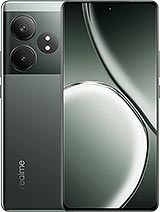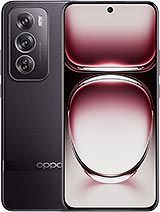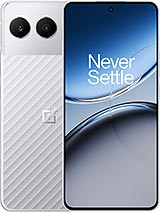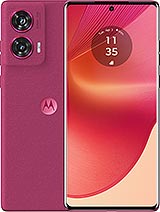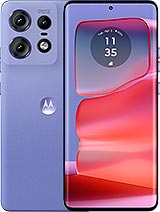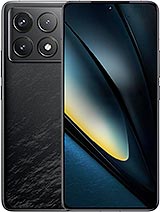HMD Skyline review
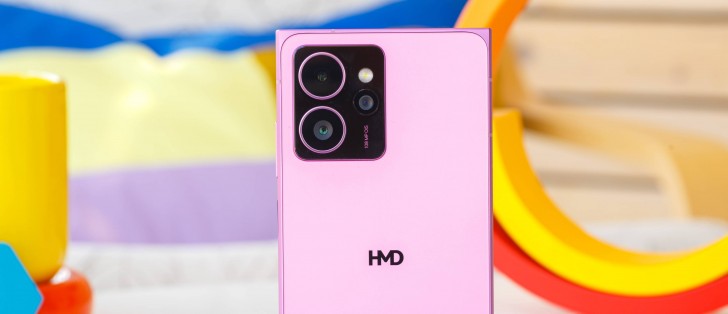
144Hz OLED panel
The HMD Skyline is built around a 6.55-inch OLED panel with a standard 1080 x 2400px resolution and supports up to 144Hz refresh rate. The screen can also show HDR10 content.

We checked and the phone can display HDR content in YouTube, but isn't compatible with Netflix for some reason. The Netflix app reports FHD playback support, but no HDR capabilities.
When it comes to brightness, the OLED panel is slightly behind the competition. In manual mode, we got 415 nits, while in auto mode, the screen boosted up to 1,060 nits (Updated 6 Aug). It's decent enough for outdoor use, but definitely not ideal.
That said, the screen looks nice and colorful and there are no apparent issues.
Refresh rate
The handset has four modes - Standard, 120Hz, 144Hz and Auto. The latter prioritizes energy savings and can only go up to 120Hz and dials down to 60Hz when you are not interacting with the display or when playing a full-screen video. We like that last bit as you can still scroll in 120Hz in the YouTube and Netflix apps. Most apps we tried and all system menus shoot up to 120Hz.

The 144Hz mode is the only one that allows you to use the panel to the fullest, but it's static, meaning the display will always refresh at 144Hz, no matter the scenario or usage.
Battery life
The HMD Skyline relies on a 4,600 mAh battery, which is a bit below today's standard of 5,000 mAh cells and runs on a recent and supposedly energy-efficient Snapdragon 7s Gen 2 SoC. It also has a medium-sized 6.55-inch OLED panel.
Having said that, the Skyline shows sub-optimal endurance in pretty much all aspects. The Active User Score is 10:47h and it's lower than most of its direct competitors. In fact, only the Poco F6 Pro shows lower results, whereas the rest of the rivals are a few steps ahead of HMD's new offering.
And it's not just one test - the Skyline seems to be dragging behind in almost all scenarios - call time, web browsing and video playback. In the gaming test, it's just about average.
We even compared it to a couple of Snapdragon 7s Gen 2-powered smartphones, such as the Realme 13 Pro+, Realme 12 Pro+ and Edge 50 Fusion and all three have better runtimes. But compared to some Xiaomi offerings with the same SoC, namely the Poco X6 or the Redmi Note 13 Pro 5G, the Skyline has slightly better endurance, despite its smaller battery pack too.
We are seeing a wide range of battery numbers out of this chip, so it appears battery life is mostly down to software optimization and manufacturer-specific tuning, and HMD is at the lower end of the spectrum in this regard.
Charging speed
As we already mentioned on the first page, the HMD Skyline comes without a bundled charger in the box, only with a cable. The handset supports up to 33W fast charging over Power Delivery 3.0, so it's not particularly fast.
Wireless charging over Qi2 maxes out at 15W. Reverse wireless charging (5W) is also possible. Two rather rare features in this price bracket.

However, the wired charging bit isn't as impressive. The handset fails to compete with most of its rivals in the price range. A full charging cycle takes more than an hour - 76 minutes to be exact, while a 30-minute charge will give you 57% of the charge back.
Speakers
The HMD Skyline features a standard hybrid stereo speaker setup. We've got the main loudspeaker at the bottom and the secondary one acting as an earpiece, too. This usually creates some imbalances in loudness, and it can be observed here as well. It's not as prominent, though.
The Skyline offers two loudness modes - standard and boosted. To boost the loudness, you need to press the volume button one more time, once the volume slider is at maximum. In this mode, the Skyline is one of the loudest smartphones we've tested with an "Excellent" -21.4 LUFS score. In normal mode, the device got a "Very Good" -24.4 LUFS score.
The trade-off of using the loudness boost is quality. The highs are noticeable distorted and overall quality suffers quite a bit. Alternatively, listening to music in the normal loudness range is much better. There's a decent amount of bass and distortion of the vocals and the highs isn't as noticeable. It's still there, but it's not as bad.
Use the Playback controls to listen to the phone sample recordings (best use headphones). We measure the average loudness of the speakers in LUFS. A lower absolute value means a louder sound. A look at the frequency response chart will tell you how far off the ideal "0db" flat line is the reproduction of the bass, treble, and mid frequencies. You can add more phones to compare how they differ. The scores and ratings are not comparable with our older loudspeaker test. Learn more about how we test here.
Reader comments
- Gavivi
- 09 Apr 2025
- CG1
The skyline seems to be a perfect fit for me even with few imperfections. I still have my eyes on it .
- Flox
- 17 Mar 2025
- pnY
Great review. I am testing the HMD Skyline for 5 days now, and this seems to be very accurate of what I experience. I have a feeling that the Nord 4 would have been a better choice for me.
- Blue Chip
- 24 Feb 2025
- fnG
With such a poor rating by GSM Arena people will still buy this overpriced phone
